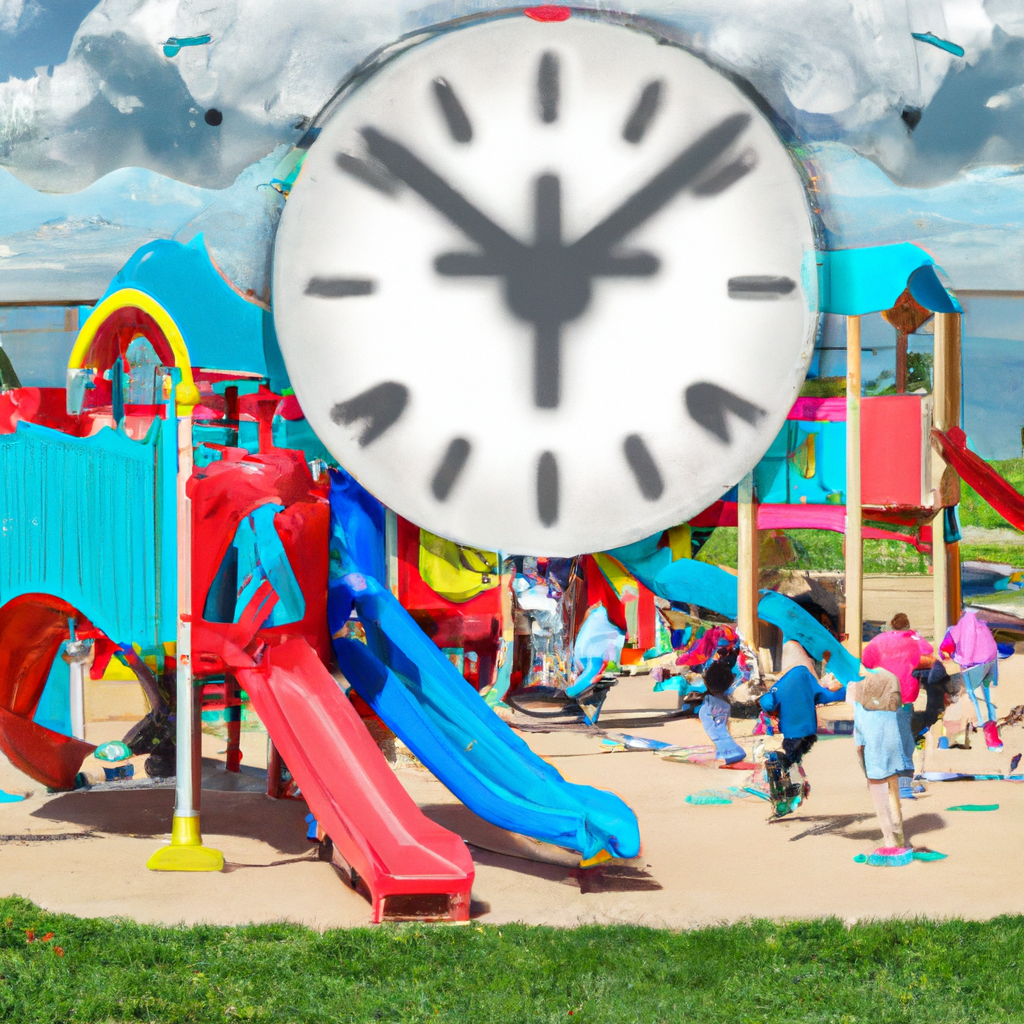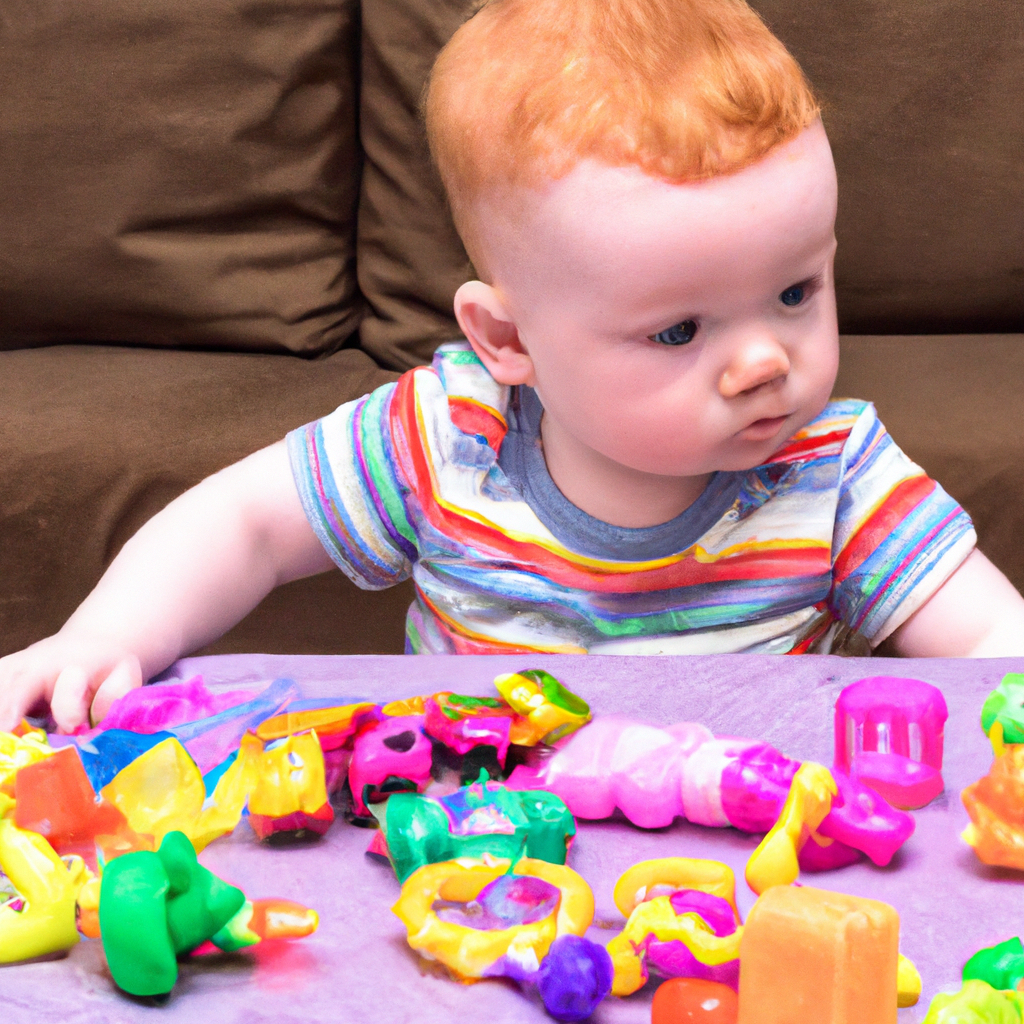As a parent, I often contemplate the important moments in my child’s development. This curiosity has prompted me to delve into the fascinating concept of critical periods.
These are the specific windows of time when children are most receptive to learning and development. Understanding critical periods is like unlocking the secret code to nurturing a child’s potential.
In this article, we’ll explore what critical periods are, why they are important, and how we can optimize them for our children’s growth and success.
So, grab a cup of coffee and let’s embark on this enlightening journey together.
Key Takeaways
- Critical periods in child development are specific time frames when children are especially receptive to learning and development.
- Early intervention during critical periods is crucial for overall development, as missed critical periods can have long-term consequences.
- Factors such as genetics, environmental influences, and access to resources can impact the timing and effectiveness of critical periods.
- Neglect during sensitive periods can lead to difficulties in language acquisition, social skills, cognitive abilities, emotional regulation, and executive functioning.
Definition of Critical Period in Child Development
In child development, a critical period is a specific time frame when you’re most sensitive to certain experiences and learning opportunities. It is during these periods that our brains are particularly receptive to acquiring specific skills and knowledge. Early intervention during critical periods is crucial because it can have a significant impact on a child’s overall development.
The importance of early intervention lies in the fact that missed critical periods can lead to long-term consequences. For example, if a child does not receive proper language stimulation during the critical period for language acquisition, they may struggle with language skills later in life. Similarly, if a child does not have access to quality social interactions during the critical period for social development, they may have difficulties forming relationships and adapting to social situations.
Identifying critical periods is essential for understanding when and how to provide the necessary interventions. By recognizing these sensitive periods, parents, educators, and healthcare professionals can ensure that children receive the appropriate experiences and learning opportunities at the right time. This knowledge allows for targeted interventions that can maximize a child’s development potential and mitigate the negative effects of missed critical periods.
Understanding the importance of identifying critical periods enables us to create supportive environments and interventions that optimize a child’s developmental outcomes.
Importance of Identifying Critical Periods
You should recognize the significance of identifying specific time frames that are crucial for your child’s growth and learning. Identifying critical periods in child development is essential for maximizing your child’s developmental potential.
Here are some key reasons why identifying critical periods is important:
-
Optimal learning: During critical periods, children are more receptive to learning and acquiring specific skills. By identifying these periods, you can provide appropriate stimulation and resources to enhance their learning experiences.
-
Early intervention: Identifying critical periods allows for early intervention in areas where a child may be struggling. By addressing developmental challenges early on, you can provide the necessary support and interventions to promote healthy development.
-
Long-term outcomes: Research suggests that early identification and intervention during critical periods can have long-term positive effects on a child’s cognitive, social, and emotional development. By maximizing their potential during these periods, you can set the foundation for future success.
Transitioning into the subsequent section about the key characteristics of critical periods, it is important to understand the specific features that define these crucial time frames for child development.
Key Characteristics of Critical Periods
Take note of the significant features that define these crucial time frames for your child’s growth and learning. Critical periods in child development are characterized by heightened sensitivity and rapid learning. During these periods, children are most receptive to specific stimuli and experiences, which greatly impact their long-term development. Understanding the key characteristics of critical periods is of utmost importance for parents and caregivers to provide optimal support and stimulation for their child’s growth.
Here are some key characteristics of critical periods:
| Characteristic | Description |
|---|---|
| Heightened sensitivity | Children exhibit heightened sensitivity to specific stimuli during this time. |
| Rapid learning | Learning and acquiring new skills occurs at an accelerated pace. |
| Limited duration | Critical periods have a specific timeframe and are time-limited. |
| Irreversible effects | The impact of experiences during critical periods is long-lasting. |
| Optimal window | These periods offer the best opportunity for certain developmental tasks. |
Understanding these characteristics is crucial in identifying and utilizing the factors influencing critical periods. Without a proper understanding of these factors, it becomes challenging to optimize a child’s development during these sensitive periods. Transitioning into the subsequent section about factors influencing critical periods, it is important to explore the various elements that shape and impact these critical time frames.
Factors Influencing Critical Periods
During these crucial time frames, it’s essential to consider the factors that shape and impact a child’s sensitive periods. These factors play a significant role in determining the extent to which a child can acquire certain skills or abilities during specific developmental stages.
One of the key factors influencing critical periods is the presence of external stimuli. For example, a child’s language development is heavily influenced by exposure to language during their early years. The more a child is exposed to language, the more likely they are to develop strong language skills.
Another factor is the child’s individual genetic predisposition. Research has shown that certain genetic factors can influence a child’s susceptibility to critical periods in various domains, such as language, motor skills, and social development.
Additionally, environmental factors, such as the availability of resources and opportunities for learning, can also impact a child’s sensitive periods. For instance, access to quality education and stimulating environments can enhance a child’s cognitive development during critical periods. On the other hand, a lack of nurturing and supportive environments may hinder the child’s ability to acquire certain skills within the sensitive period.
Understanding these factors is crucial for parents, educators, and caregivers as they can provide the necessary support and create optimal conditions for a child’s development. By recognizing the factors that influence critical periods, we can ensure that children have the best opportunities to reach their full potential.
Transition: Now that we have explored the factors influencing critical periods, let’s delve into some examples of critical periods in child development.
Examples of Critical Periods in Child Development
One example of a sensitive period in a child’s growth is when they acquire language skills. During this critical period, children are highly receptive to language input and have a remarkable ability to learn and master different languages.
Here are some examples of sensitive periods in child development:
-
Sensorimotor Development: From birth to about 2 years old, children go through a sensitive period for developing their motor skills and sensory abilities.
-
Social Development: During early childhood, children experience a sensitive period for social interaction and the development of social skills.
-
Cognitive Development: Between the ages of 2 and 6, children enter a sensitive period for cognitive development, including the acquisition of basic math and reasoning skills.
-
Emotional Development: Throughout childhood, children have sensitive periods for the development of emotional regulation and empathy.
-
Executive Function: During adolescence, there is a sensitive period for the development of higher-order thinking skills, such as problem-solving and decision-making.
Neglect during these critical periods can have a lasting impact on a child’s development. Research has shown that children who experience neglect during sensitive periods may struggle with language acquisition, social skills, cognitive abilities, emotional regulation, and executive functioning.
Understanding the importance of sensitive periods highlights the significance of early intervention during critical periods. During these times, providing children with appropriate support, stimulation, and nurturing can significantly enhance their development.
Role of Early Intervention During Critical Periods
Early intervention plays a crucial role in enhancing a child’s growth and development during sensitive phases. Research has shown that early intervention strategies have a significant impact on brain development in children. By identifying and addressing developmental delays or challenges early on, professionals can provide appropriate support and interventions that can positively influence a child’s long-term outcomes.
There are various early intervention strategies that can be implemented to promote optimal brain development. These strategies may include providing stimulating and enriched environments, offering educational programs tailored to a child’s individual needs, and engaging in activities that promote language, cognitive, and social-emotional development. Additionally, early intervention professionals may work closely with families to provide guidance, support, and resources to ensure the best possible outcomes for the child.
Long-Term Effects of Missing Critical Periods
To minimize the risk of long-term developmental challenges, it’s important to intervene early and address any delays or challenges that may arise during these sensitive phases. Missing critical periods can have significant long-term consequences on a child’s development.
These critical periods are specific time frames in which the brain is most receptive to learning and forming connections. During these periods, the brain undergoes rapid development, and experiences play a crucial role in shaping neural circuits. If a child misses out on acquiring certain skills or experiences during these critical periods, it can have lasting effects on their overall development.
For example, if a child does not receive adequate language stimulation during the critical period for language development, they may struggle with language skills later in life. Similarly, if a child does not receive appropriate social interaction during the critical period for social development, they may have difficulties forming and maintaining relationships in the future. Therefore, it is crucial to identify and address any developmental delays or challenges during these sensitive phases to ensure optimal long-term outcomes for children.
Understanding the neurological basis of critical periods is essential in comprehending the importance of early intervention. The brain goes through significant changes during these critical periods, with specific areas becoming highly active and specialized for certain functions. This neuroplasticity allows the brain to adapt and learn efficiently during these times.
Research has shown that during critical periods, synaptic connections in the brain are strengthened or eliminated based on the experiences a child has. This process, known as synaptic pruning, helps to refine neural circuits and enhance the efficiency of brain function. By intervening early and providing appropriate experiences and interventions, we can support the development of strong neural connections and promote optimal brain development.
The neurological basis of critical periods underscores the importance of early intervention in addressing developmental delays and challenges to maximize a child’s potential.
Neurological Basis of Critical Periods
Understanding the neurological basis of critical periods is crucial because it allows me to comprehend the importance of intervening early and providing appropriate experiences to support optimal brain development. During critical periods, the brain exhibits a high degree of neuroplasticity, meaning it is more adaptable and responsive to environmental inputs. This neuroplasticity allows the brain to undergo significant changes and refine its neural connections based on the experiences it receives. The concept of critical periods is closely related to sensitive periods, which are specific time windows during development when certain skills or abilities are most easily acquired.
To emphasize the significance of critical periods and sensitive periods, I have created a table below that highlights some examples of critical periods in child development:
| Developmental Area | Critical/Sensitive Period |
|---|---|
| Language | 0-7 years |
| Vision | Birth to 3 years |
| Social Skills | 0-5 years |
During these critical or sensitive periods, the brain is particularly receptive to stimuli related to these developmental areas. Intervening early with appropriate experiences and stimulation can have a profound impact on the child’s overall development and future outcomes.
Transitioning into the subsequent section about ‘critical periods in language acquisition,’ it is essential to explore how the brain’s neuroplasticity during the language critical period shapes a child’s language development.
Critical Periods in Language Acquisition
During the critical period of language acquisition, children experience a rapid and effortless development of their language skills. This period, which typically occurs between infancy and adolescence, is a crucial time for the brain to acquire the necessary linguistic abilities.
Research has shown that language acquisition is closely linked to cognitive development. As children learn to understand and produce language, they are also developing crucial cognitive skills such as memory, attention, and problem-solving. The ability to comprehend and use language effectively plays a significant role in shaping a child’s overall cognitive abilities.
Here are three key aspects of language acquisition and its impact on cognitive development:
-
Vocabulary Expansion: Language acquisition involves the gradual expansion of vocabulary. As children learn new words and their meanings, their cognitive abilities to categorize and conceptualize information also improve.
-
Syntax and Grammar: Acquiring the rules of language, such as syntax and grammar, helps children develop their cognitive skills in reasoning and logical thinking.
-
Communication and Social Interaction: Language acquisition allows children to engage in meaningful communication and social interactions. These interactions stimulate cognitive development by fostering critical thinking, perspective-taking, and problem-solving abilities.
Transitioning to the subsequent section about critical periods in social and emotional development, it is important to explore how early experiences shape a child’s emotional and social development without explicitly stating ‘step’.
Critical Periods in Social and Emotional Development
When it comes to social and emotional development in children, there are several key points to consider.
One of the first is early attachment and bonding, which plays a crucial role in a child’s development of secure relationships.
Additionally, emotional regulation skills are important for children to learn how to manage and express their emotions effectively.
Lastly, socialization and peer relationships are vital for children to develop social skills and establish meaningful connections with others.
These aspects of social and emotional development are essential for a child’s overall well-being and success in life.
Early Attachment and Bonding
From birth, a strong bond with a primary caregiver is crucial for a child’s development. Early bonding and secure attachment play a significant role in shaping a child’s emotional and social well-being. Research suggests that infants who form a secure attachment with their caregivers are more likely to develop healthy emotional regulation skills and have better relationships later in life.
During the early years, a secure attachment provides a safe haven for a child, allowing them to explore the world with confidence while knowing they have a reliable caregiver to turn to for support. This bond forms the foundation for the development of emotional regulation skills, which are essential for managing and expressing emotions effectively.
As children grow, they learn to regulate their emotions through various strategies, such as self-soothing techniques, seeking comfort from others, or engaging in activities that bring them joy. These emotional regulation skills are vital for building resilience, navigating social interactions, and adapting to different situations.
Transitioning into the subsequent section, it is important to understand how emotional regulation skills contribute to a child’s overall development.
Emotional Regulation Skills
To effectively navigate social interactions and adapt to different situations, it is crucial for you to develop strong emotional regulation skills.
Emotional regulation refers to the ability to manage and control one’s emotions in a healthy and appropriate way. It is an essential skill that starts developing during early childhood and continues to develop throughout life.
During the early years, children begin to learn emotional regulation techniques through their interactions with caregivers and peers. As they grow older, they become better at identifying and expressing their emotions, as well as regulating their reactions to different situations.
Developmental milestones, such as learning to self-soothe, understanding the impact of their emotions on others, and using strategies like deep breathing or positive self-talk, play a significant role in the development of emotional regulation skills.
These skills provide a foundation for successful socialization and peer relationships, allowing individuals to navigate social situations with confidence and empathy.
Socialization and Peer Relationships
As we discussed earlier, emotional regulation skills play a crucial role in a child’s development.
Now, let’s shift our focus to another important aspect of child development: socialization and peer relationships.
During the critical period, peer influence becomes increasingly significant in shaping a child’s behavior and attitudes. Interacting with peers helps children develop social skills, such as cooperation, communication, and empathy. Through these interactions, they learn to navigate social situations, form friendships, and understand the importance of sharing and taking turns.
Research has shown that positive peer relationships during this critical period can have long-lasting effects on a child’s social and emotional well-being. On the other hand, negative peer influence can lead to behavioral problems and difficulties in forming healthy relationships.
Now, let’s explore strategies for optimizing critical periods in child development without further ado.
Strategies for Optimizing Critical Periods in Child Development
Maximize your child’s potential by implementing effective strategies to optimize critical periods in their development. These critical periods, also known as sensitive periods, are specific time frames in a child’s life where they are most receptive to learning and development in certain areas.
By understanding and utilizing these strategies, you can help your child reach their full potential and set them up for success in the long run. Here are four key strategies for optimizing critical periods in your child’s development:
-
Identify the critical periods: It’s essential to recognize and understand the critical periods relevant to different aspects of your child’s development, such as language acquisition, social skills, and cognitive development. This knowledge will enable you to focus your efforts on these specific areas during the optimal time frames.
-
Provide a rich environment: Create an environment that is stimulating, nurturing, and supportive of your child’s development. Surround them with age-appropriate toys, books, and activities that encourage exploration, creativity, and problem-solving.
-
Offer consistent and meaningful experiences: Consistency is crucial during critical periods. Regularly expose your child to experiences that align with the specific critical period, providing them with ample opportunities to practice and refine their skills.
-
Foster positive relationships: Encourage social interactions and build strong relationships with your child. These relationships provide the foundation for their emotional development and help them navigate social situations effectively.
Frequently Asked Questions
How Long Do Critical Periods Typically Last in Child Development?
Typically, critical periods in child development last for a specific duration, during which certain experiences or stimuli have a significant impact on a child’s development.
The length of these critical periods can vary depending on the specific aspect of development being considered. For example, the critical period for language acquisition is generally believed to be around the first few years of a child’s life.
During this time, exposure to language is crucial for optimal language development.
Are Critical Periods the Same for Every Child?
Critical periods in child development can vary from child to child. Individual variations play a significant role in determining the duration and intensity of these critical periods.
Additionally, cultural influences also contribute to the differences observed among children. It is important to recognize that not all children experience critical periods in the same way or at the same time.
Understanding these variations and influences is crucial for providing appropriate support and intervention during these important developmental stages.
Can Critical Periods Be Reversed or Extended?
Critical periods in child development refer to specific time frames when a child’s brain is most receptive to acquiring certain skills or abilities.
While critical periods are generally thought to be fixed, there is some evidence suggesting that they can be reversed or extended under certain circumstances.
Reversing critical periods may involve intensive interventions or therapies aimed at helping a child develop skills they missed during the typical critical period.
On the other hand, extending critical periods may be possible through continued exposure and practice in the specific skill or domain.
Are Critical Periods the Same in All Areas of Child Development?
In child development, critical periods refer to specific time frames during which certain skills or abilities are most easily acquired. These periods are not the same in all areas of development.
For example, language acquisition typically has a critical period in early childhood, while sensory development may have different critical periods for different senses.
Research suggests that these critical periods cannot be reversed or extended beyond a certain point, highlighting the importance of early intervention and stimulation in promoting optimal development.
What Happens if a Critical Period Is Missed or Not Properly Utilized?
If a critical period in child development is missed or not properly utilized, there can be significant consequences.
During these periods, the brain is highly sensitive and experiences rapid neuroplasticity, allowing for optimal learning and development.
However, if this window of opportunity is missed, it becomes increasingly difficult for the brain to acquire certain skills or abilities later in life.
This is why early intervention and proper utilization of critical periods are crucial for promoting healthy child development.
Conclusion
In conclusion, understanding the concept of critical periods in child development is crucial for parents, educators, and professionals working with children.
These sensitive periods are unique windows of opportunity for learning and growth that have a profound impact on a child’s development.
Research suggests that approximately 85% of brain development occurs by the age of five, highlighting the significance of early experiences and interventions during these critical periods.
This statistic emphasizes the importance of providing children with positive and enriching experiences during their early years to foster their overall development and set them up for success in life.









